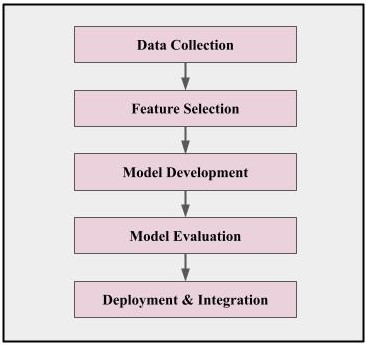The Rise of Crypto Malware: Leveraging Machine Learning Techniques to Understand the Evolution, Impact, and Detection of Cryptocurrency-Related Threats
Main Article Content
Abstract
Crypto malware has become a major threat to the security of cryptocurrency holders and exchanges. As the popularity of cryptocurrency continues to rise, so too does the number and sophistication of crypto malware attacks. This paper leverages machine learning techniques to understand the evolution, impact, and detection of cryptocurrency-related threats. We analyse the different types of crypto malware, including ransomware, crypto jacking, and supply chain attacks, and explore the use of machine learning algorithms for detecting and preventing these threats. Our research highlights the importance of using machine learning for detecting crypto malware and compares the effectiveness of traditional methods with deep learning techniques. Through this analysis, we aim to provide insights into the growing threat of crypto malware and the potential benefits of using machine learning in combating these attacks.
Article Details
References
A. Alqahtani and F. T. Sheldon, “A Survey of Crypto Ransomware Attack Detection Methodologies: An Evolving Outlook,” Sensors, vol. 22, no. 5, pp. 1–19, 2022, doi: 10.3390/s22051837.
D. W. Fernando, N. Komninos, and T. Chen, “A Study on the Evolution of Ransomware Detection Using Machine Learning and Deep Learning Techniques,” Internet of Things, vol. 1, no. 2, pp. 551–604, 2020, doi: 10.3390/iot1020030.
P. R. Chandre, P. N. Mahalle, and G. R. Shinde, “Machine Learning Based Novel Approach for Intrusion Detection and Prevention System: A Tool Based Verification,” in 2018 IEEE Global Conference on Wireless Computing and Networking (GCWCN), Nov. 2018, pp. 135–140, doi: 10.1109/GCWCN.2018.8668618.
M. Humayun, N. Z. Jhanjhi, A. Alsayat, and V. Ponnusamy, “Internet of things and ransomware: Evolution, mitigation and prevention,” Egypt. Informatics J., vol. 22, no. 1, pp. 105–117, 2021, doi: 10.1016/j.eij.2020.05.003.
S. Mansfield-Devine, “Ransomware: taking businesses hostage,” Netw. Secur., vol. 2016, no. 10, pp. 8–17, 2016, doi: 10.1016/S1353-4858(16)30096-4.
G. R. Pathak, M. S. G. Premi, and S. H. Patil, “LSSCW: A lightweight security scheme for cluster based Wireless Sensor Network,” Int. J. Adv. Comput. Sci. Appl., vol. 10, no. 10, pp. 448–460, 2019, doi: 10.14569/ijacsa.2019.0101062.
F. Faghihi and M. Zulkernine, “RansomCare: Data-centric detection and mitigation against smartphone crypto-ransomware,” Comput. Networks, vol. 191, no. September 2020, p. 108011, 2021, doi: 10.1016/j.comnet.2021.108011.
G. R. Pathak and S. H. Patil, “Mathematical Model of Security Framework for Routing Layer Protocol in Wireless Sensor Networks,” Phys. Procedia, vol. 78, no. December 2015, pp. 579–586, 2016, doi: 10.1016/j.procs.2016.02.121.
S. R. Davies, R. Macfarlane, and W. J. Buchanan, “Evaluation of live forensic techniques in ransomware attack mitigation,” Forensic Sci. Int. Digit. Investig., vol. 33, p. 300979, 2020, doi: 10.1016/j.fsidi.2020.300979.
C. Beaman, A. Barkworth, and T. David, TC 11 Briefing Papers Ransomware?: Recent advances , analysis , challenges and future research directions,” no. January, 2020.
S. Chen, “Cryptocurrency Financial Risk Analysis Based on Deep Machine Learning,” Complexity, vol. 2022, 2022, doi: 10.1155/2022/2611063.
T. Choithani, A. Chowdhury, S. Patel, P. Patel, D. Patel, and M. Shah, “A Comprehensive Study of Artificial Intelligence and Cybersecurity on Bitcoin, Crypto Currency and Banking System,” Ann. Data Sci., 2022, doi: 10.1007/s40745-022-00433-5.
E. Badawi and G. V. Jourdan, “Cryptocurrencies emerging threats and defensive mechanisms: A systematic literature review,” IEEE Access, vol. 8, pp. 200021–200037, 2020, doi: 10.1109/ACCESS.2020.3034816.
T. Hofmann, “How organisations can ethically negotiate ransomware payments,” Netw. Secur., vol. 2020, no. 10, pp. 13–17, 2020, doi: 10.1016/S1353-4858(20)30118-5.
P. Bajpai and R. Enbody, “Dissecting. NET ransomware: key generation, encryption and operation,” Netw. Secur., vol. 2020, no. 2, pp. 8–14, 2020, doi: 10.1016/S1353-4858(20)30020-9.
R. U. Rahman and D. S. Tomar, “A new web forensic framework for bot crime investigation,” Forensic Sci. Int. Digit. Investig., vol. 33, p. 300943, 2020, doi: 10.1016/j.fsidi.2020.300943.
A. Patel and J. Tailor, “A malicious activity monitoring mechanism to detect and prevent ransomware,” Comput. Fraud Secur., vol. 2020, no. 1, pp. 14–19, 2020, doi: 10.1016/S1361-3723(20)30009-9.
Chandre PR, Mahalle PN, Shinde GR. 2021. Intrusion prevention framework for WSN using deep CNN. Turkish Journal of Computer and Mathematics Education (TURCOMAT) 12(6):3567-3572.
Chandre, P.; Mahalle, P.; Shinde, G. Intrusion prevention system using convolutional neural network for wireless sensor network. Int. J. Artif. Intell. 2022, 11, 504–515.
Deshpande S, Gujarathi J, Chandre P, Nerkar P. A comparative analysis of machine deep learning algorithms for intrusion detection in wsn. In: Security Issues and Privacy Threats in Smart Ubiquitous Computing, 2021; pp. 173–193. Springer.
P. R. Chandre, P. N. Mahalle and G. R. Shinde, "Deep learning and machine learning techniques for intrusion detection and prevention in wireless sensor networks: Comparative study and performance analysis" in Design Frameworks for Wireless Networks, Singapore:Springer, pp. 95-120, 2020.

